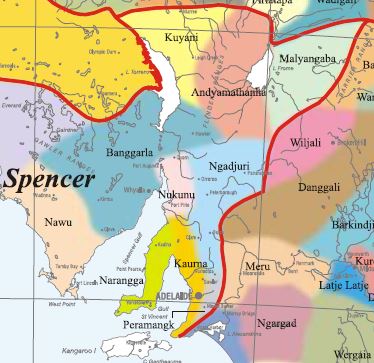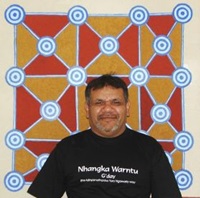AustLit
-
The Adnyamathanha are an Indigenous Australian people from the Flinders Ranges, South Australia, some 500km north of Adelaide. The Adnyamathanha people comprise many groups with distinct territories. Their country is rich in valuable ochre and stone, and was subject to colonial incursions from the 1850s onwards.
This trail introduces Adnyamathanha writers, storytellers, and works.
'Adnyamathanha' means 'Rock People'. It is also the name of their traditional language.
Language variations include Atnyamathanha, Adnyamatana, Adnjamathanha, Anyamatana, Keidnamutha, Gadnyamatana, Anyamitana, Anjimatana, Adnyamathnha, Unyamootha, Atnyaarlta.
Other names for the people of the northern Flinders Ranges are based on the construction 'People's/This/My Language', and includes the variations Nimbalda, Archualda, and Yura Ngawarla. The Adnyamathanha people often refer to themselves as Yura.
Readers are advised to explore resources available at the Australian Institute for Aboriginal and Torres Strait Islander Studies (AIATSIS) website and the zoomable map of Indigenous Australia, developed as a part of the Encyclopaedia of Aboriginal Australia.
Brutal colonial incursions into Adnyamathanha territory in the 1850s, and the drying up or contamination of their waterholes because of the settlers’ agricultural practices, caused the Adnyamathanha’s displacement from their land. This land attracted Europeans because of its high quality ochre and stone. Up until the 1970's many Adnyamathanha lived in the ‘outback ghettos’ of the missions, and today the main locations for Adnyamathanha people are Nepabunna and Port Adelaide.
The BlackWords team have so far identified more than sixty authors and storytellers who identify as Adnyamanthanha. Prominent storytellers from Adnyamathanha communities who have had stories published in language and in bilingual editions include Pearl McKenzie,Gertie Johnson, Terrance Coulthard, Lynch Ryan and Annie Coulthard.
Discover more Adnyamanthanha writers | Discover all records related to Adnyamanthanha in AustLit
Or, conduct your own Advanced Search
Warning: Please be aware that this work may contain images of people who are now deceased.
Sources include: AustLang, AITSIS, State Library of South Australia, and Outback Ghettos (Brock, 1993).
-
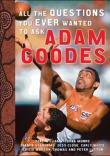 See full AustLit entry
See full AustLit entry'Interview with the Swans player by some deadly students from Alexandria Park High School.' (Source: Indij Readers website)
(...more) -
 See full AustLit entry
See full AustLit entry'Stories of Aboriginal Australians from Melville Island, Bathurst Island, Roper River, Darwin, Maningrida, Groote Eylandt, Katherine, Alice Springs and the Flinders ranges. Two stories are printed in Tiwi and English.' (Source: TROVE)
(...more)Aboriginal Short Stories, No. 32 1990 contains stories of Aboriginal Australians from Melville Island, Bathurst Island, Roper River, Darwin, Maningrida, Groote Eylandt, Katherine, Alice Springs and the Flinders ranges.
Five of these stories Adnyamathanha Man, Full Initiation (Claude Demell's Biography), Interview With Claude Demell, Yuru Ngawarla : Interview with Murray Wilton and Nigger, Nigger : Interview with Buck McKenzie are from members of the Adnyamathanha people.
-
Rachel Brady recounts some of her memories of the 'good old days' at the Nepabunna Mission and station life. (...more)See full AustLit entry
This short life story was found in the Aboriginal Heritage Newsletter, a periodical that was published by the Aboriginal Heritage Branch in South Australia in 1981.
Rachel Brady an Adnyamathanha woman, recounts some of her memories at the Nepabunna Mission, and her experiences of station life.
-
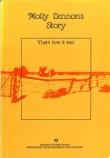 See full AustLit entry
See full AustLit entry'Reminiscences of Molly Lennon (Ruth McKenzie) witnessing mothers killing; growing up at Bloods Creek, Eringa Station, Colebrook Home, marrying an Adnyamathanha man at Nepabunna.'
(...more) -
Three Generations of Women: Learning and Schooling Amongst the Adnyamathanha : Aspects of the Lives of Peal McKenzie, Pauline Coulthard and Charlene Coulthard by Gillian Weiss
'This paper arises from the stories of three Adnyamathanha women of the Flinders Ranges in South Australia. They are three generations of a single family, mother, daughter, and granddaughter...' (...more)See full AustLit entry -
Walha Udi Marvyn-anha Frederick McKenzie is an artist, writer and poet.
Read the first line of the poem - Adnyamathanha Yura Ngankini Not 'The Adnyamathanha Nation' below:
Lately I have heard a new thing upon our Sacred Winds
The poem - An Ode to Our Elders - Our Unsung Heroes begins - They are old and frail now
-
Mr. McTaggart and The Drought as Told by Mr Walter Coulthard To Christine Jericho by Walter Coulthard
See full AustLit entryMr McTaggart owned Wooltana Station although he was a good station owner and tried to get people jobs, however, he made a mistake that he didn't forget. He had shot Left-hand Billy's dog.
(...more)Not only was Walter Coulthard a storyteller, but he had also authored this short story that was published in the Yura newsletter, a publication that recorded myths and languages, etc among the Adnjamathanha people and lands of the Flinders Ranges.
This story is set before World War I, about a wealthy station owner Mr McTaggart who made a terrible mistake when he shot Left-hand Billy's dog.
-
'The Magpie and the Crow' by Terrence Coulthard, Cliff Coulthard and Buck Mackenzie. Illus. by Terrence Coulthard and Sue Hatch
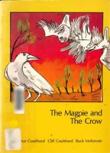 See full AustLit entry
See full AustLit entryA long time ago the crow and the magpie had beautiful white feathers like the white cockatoo. That was before they teased the eagle, who deserved more respect.
A tale from the Adnyamathanha people, The Magpie and the Crow, “is said to have taken place between Nepabunna and Angepenna in the Flinders Ranges of South Australia.” The story explains the colors and markings of the magpie and the crow.
(...more)A tale from the Adnjamathanha people, this work is said to have taken place between Nepabunna and Angepenna in the Flinders Ranges of South Australia.
-
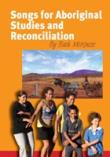 Image courtesy of publisher's website.See full AustLit entry
Image courtesy of publisher's website.See full AustLit entry'This book and CD is suitable for kindergarten through to adults. Includes 17 songs on CD and songbook with lyrics, guitar chords, melody line and lots of colour photos and teaching ideas.'
'Some songs are sung by Buck, an Adnyamathanha man from the Flinders Ranges in South Australia and some are sung by the South Australian Public Primary Schools 'Festival of Music' Choir and other students. Some songs are about Reconciliation, some tell Dreaming stories, some about feelings and some for fun.
(...more) -
Yulu's Coal : A Story from the Adnyamathanha country by Adnyamathanha Community, compiled by Liz Thompson
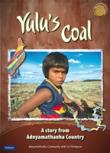 This image has been sourced from Publisher's websiteSee full AustLit entry
This image has been sourced from Publisher's websiteSee full AustLit entry'Adnyamathanha Country is in the northern Flinders Ranges in South Australia. People from the Adnyamathanha community have chosen to share one of their traditional stories. Yulu’s Coal is a Creation story that tells about Yulu, the Kingfisher Man, and of how parts of the Flinders Ranges came to be. The story is traditionally told in Adnyamathanha language and has been translated into English for Sharing our Stories.' (Source: cover)
(...more) -
Jacinta Koolmatrie - Aboriginal Rock art and the 'myth' about Aboriginal myths
-
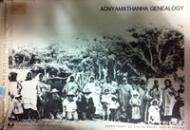 See full AustLit entry
See full AustLit entryThe Adnyamathanha genealogy was compiled by Christine Davis as part-time hobby, but it was her Aunt Pearl Mackenzie that first began to collect the names from the old people. In 1979, was when Christine began to write the collected information down.
The genealogy covers seven main family groups of the Adnymathanha people, and shows how these familes are linked. It includes extensive linked family trees containing all births, deaths and marriages to February 1985; also includes many portraits and individual histories (Nepabunna).
(...more)Warning: Please be aware that this work may contain images of people who are now deceased.
-
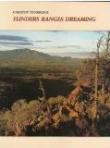 This image has been sourced from Web.See full AustLit entry
This image has been sourced from Web.See full AustLit entryFlinders Ranges Dreaming is an extensive collection of the traditional stories of the Adnyamathanha people of the Northern Flinders Ranges and adjacent plains. It contains over fifty stories and as many photographs and maps. It was initiated by Adnyamathanha young people who feared that they were in danger of losing their stories forever.
(...more) -
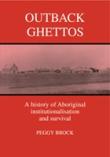 This image has been sourced from Publishers website.See full AustLit entry
This image has been sourced from Publishers website.See full AustLit entry'Up until the 1970s, a large proportion of Aboriginal people in Australia had some experience in institutions as part of federal assimilation and protection policies. Focusing on three communities in South Australia, this book attempts to understand the consequences of this institutionalisation for Aborigines and Australian society in general. Peggy Brock uses the word 'ghetto' to evoke the nature of the missions in which, for generations, many Aboriginal people settled, as ghettos both oppress and nurture those who live within them.
(...more) -
The Two Rainbow Serpents Travelling: Mura Track Narratives from the 'Corner Country' by Jeremy Beckett and Luise Anna Hercus
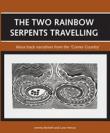 Image courtesy of publisher's website.See full AustLit entry
Image courtesy of publisher's website.See full AustLit entry'The ‘Corner Country’, where Queensland, South Australia and New South Wales now converge, was in Aboriginal tradition crisscrossed by the tracks of the mura, ancestral beings, who named the country as they travelled, linking place to language. Reproduced here is the story of the two Ngatyi, Rainbow Serpents, who travelled from the Paroo to the Flinders Ranges and back as far as Yancannia Creek, where their deep underground channels linked them back to the Paroo. Jeremy Beckett recorded these stories from George Dutton and Alf Barlow in 1957.
(...more)The ‘Corner Country’, where Queensland, South Australia and New South Wales now converge, was in Aboriginal tradition crisscrossed by the tracks of the mura, ancestral beings, who named the country as they travelled, linking place to language.
-
This organisation (previously known as South Australian Studies of Society and Environment Council - SASOSE Council) supports teachers with professional learning and resources for Australian Curriculum.
– Humanities and Social Sciences subjects of History, Geography, Civics and Citizenship, Economics and Business
– Cross-curriculum priorities of Aboriginal and Torres Strait Islander histories and cultures, Asia and Australia’s engagement with Asia, and, Sustainability
– General capabilities, in particular, critical and creative thinking, personal and social capability, ethical behaviour, and, intercultural understanding.
See HASS SA website for more information.
-
Originally compiled by Irene Howe in 2014. Last updated 2019.
You might be interested in...

